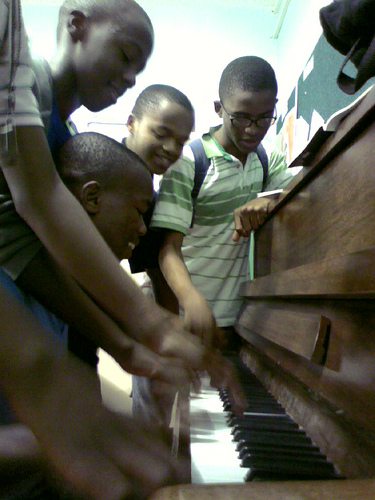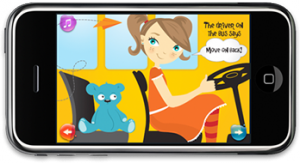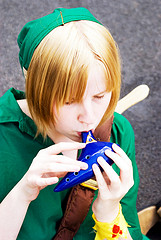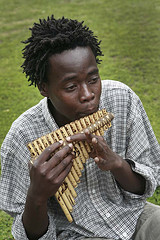Music exists in every known culture to man. From indigenous Australian aborigines exploring nature through sound to an elementary schoolroom in Japan learning the Suzuki method to American high schoolers jamming to a hopping jazz tune in New Orleans, each cultural group shares its own unique story through music.
All over the world, children learn music
Japan
The Japanese Suzuki method, widely adopted both in the East and West and created by educator Shinichi Suzuki, educates the whole child using music[2]. Children study music by ear at three years old. They learn in groups, and teachers test them on classical literature. Parents actively involve themselves with their child’s music education, regardless of their own musical background. The combination of parent involvement, ear training, a positive learning environment, and group learning helps Suzuki students mature quickly in music.
Sweden
Swedish schoolchildren create their own rock bands in music class, choose a few snazzy tunes, and jam together[5]. Educators developed this curriculum to counter traditional music education. Kids have fun teaching each other through self-expression and organic ear training.
South Africa
In South Africa a children’s orchestra brings joy to the Sowetto community, where hope is almost nonexistent for youths[5]. Founded by British violist Rosemary Nalden, the ensemble has grown to over 80 members. Children learn to overcome hardship and express themselves through music instead of violence.
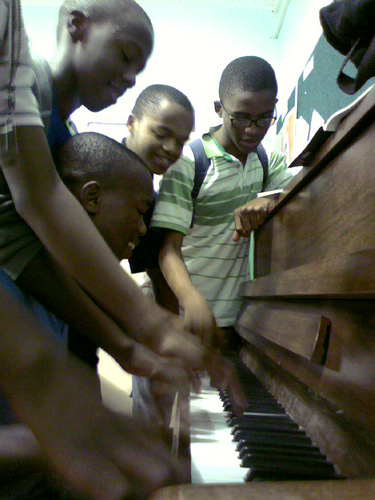
Germany & Canada
The German program “An Instrument for Every Child” encourages music teachers to work with primary school teachers, developing overall musicianship, ear training, and rhythm. “An Instrument for Every Child” extends to all children regardless of socioeconomic level. Group learning is integral to the program. Canada has adopted a similar program[5].
Explore cultures around the world through music
- National Geographic World Music Online.
For a truly multimedia approach to world music, check out Nat Geo Music. Watch concert videos, listen to music, find out about the artists, and find out the latest on great music around the globe. - “Wheels on the Bus” iPhone App.
Kids can learn how to sing the “Wheels on the Bus” in French, Spanish, German, English, or Spanish with this easy iPhone app.
- Turn your iPhone into an ancient wind instrument.

The Ocarina app for the iPhone actually allows you to blow into your phone and recreate the sounds from the ocarina, an ancient flute used in Latin America, China, and India[7]. - Learn music in a different language.
Learn a new language with your child. Check out Mama Lisa’s World for fun songs from around the world. - Learn World Percussion with Pocket Shaker.
Pocket Shaker turns your iPhone into several different instruments like a conga, shekere, castanet, and tambourine. - Travel.
You don’t have to travel to the other side of the globe to enjoy world music. Many regions enjoy eclectic mixes of culture where you can enjoy authentic concerts from around the world within a few hours from home. - Host a kid’s world music festival.
Invite friends and family to fun world music festival at your school or home. Everyone brings a CD from a different culture and an authentic dish. Putumayo World Music has an amazing eclectic mix of authentic world music CDs for kids. Incorporate games and dances from each culture. - Learn musical elements from different cultures
Don’t know what an Indian raga is or the Chinese pentatonic scale? Check out the world music quiz below to test your ears.  Learn about world music with fun interactive websites like Maya and Miguel.
Learn about world music with fun interactive websites like Maya and Miguel.
This fun website trains your ears to learn new sounds from around the world. Try new music world beats from China, Brazil, Africa, and the Middle East or play around with instruments like the bouzouki or bagpipes.- Learn world music rhythms.
Train your ears to learn rhythms from around the world by listening to examples in music and clapping them back. Look for more in a future Music & Life article!
How have you and your child explored music from other cultures? Share your thoughts, experiences, and ideas with us in the Comments below. We’d love to hear from you!
Show article sources
Sources
- Brown, S. (2005). Sound of Music Gives Feel for Language. Science Now, 3. Retrieved from MasterFILE Premier database.
- International Suzuki Association. (2010). The Suzuki Method. Retrieved from http://internationalsuzuki.org/method.htm
- Moore, P. (2009). Singing Forges a Link Between Music and Language. Teaching Music, 17(2), 57. Retrieved from MasterFILE Premier database.
- Moreno, S. (2009). Can Music Influence Language and Cognition?. Contemporary Music Review, 28(3), 329. Retrieved from MasterFILE Premier database.
- Music Manifesto. (2010). Music Education Around the World. Retrieved from http://www.musicmanifesto.co.uk/features/details/topic/24988
- Schellenberg, E. (2005). Music and Cognitive Abilities. Current Directions in Psychological Science (Wiley-Blackwell), 14(6), 317-320. doi:10.1111/j.0963-7214.2005.00389.x.
- STL Ocarina. (2010). History of the Ocarina. Retrieved from http://www.stlocarina.com/ocarina-history.html

